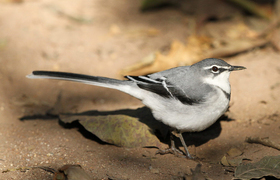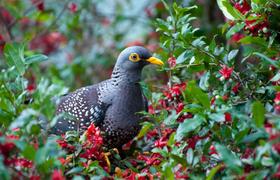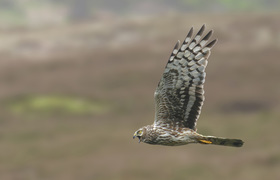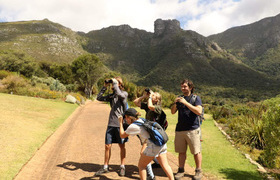Earth Day 2020: Birds, lockdown and cause to pause
22 April 2020 | Story Helen Swingler. Read time 10 min.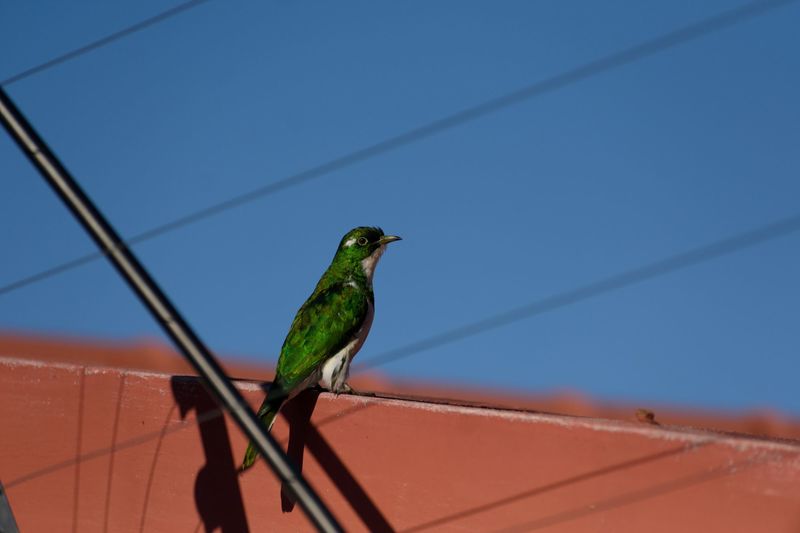
On Earth Day on 22 April, University of Cape Town (UCT) ornithologists Professor Peter Ryan and PhD candidate Jessleena Suri talk about resurgent birdlife in urban and suburban areas in the wake of the nationwide lockdown. Is there evidence of birds adapting to and potentially benefitting from humans isolating?
All over the globe the 50th anniversary of Earth Day is being commemorated in lockdown conditions.
With climate action as this year’s International Earth Day theme, it’s also ironic that enforced isolation has given humanity cause to pause, and put a much greater dent in global carbon emissions than any climate accord has achieved. As a result, people are noticing birdlife in their surroundings, neighbourhoods and gardens as never before, as well as small mammals – genets, caracals, mongooses and otters are being seen more frequently in the now more tranquil urban environments.
Increasingly visible wildlife
Has reduced noise pollution and traffic brought more birdlife to urban and suburban areas? While the signals for small mammals may be clearer, they’re more opaque for birds, said Professor Peter Ryan in an interview with CapeTalk’s Lester Kiewit on 20 April. Ryan is director of UCT’s FitzPatrick Institute of African Ornithology.
Without adequate baseline data to work from, ornithologists will find it hard to verify anecdotal changes, he added. There is also the small matter of field researchers (like Ryan) being confined to home with the rest us. However, some interesting common signals have emerged from an appeal to birders around the country to report any changes in bird behaviour.
Some people reported more birds, but those with feeders in their gardens generally saw fewer birds than usual, and have had to replenish food stocks much less often. They surmise, said Ryan, that birds are taking advantage of the lockdown to feed in areas where previously they were excluded by human activity.
“We also have to be really careful in distinguishing whether there are actually more birds in the urban areas during lockdown or whether it’s just that people are spending more time observing them,” he said.
“One of the more interesting patterns reported by numerous observers is of birds occurring in bigger flocks than usual, including sparrows, white eyes, thrushes and Red-Winged Starlings.”
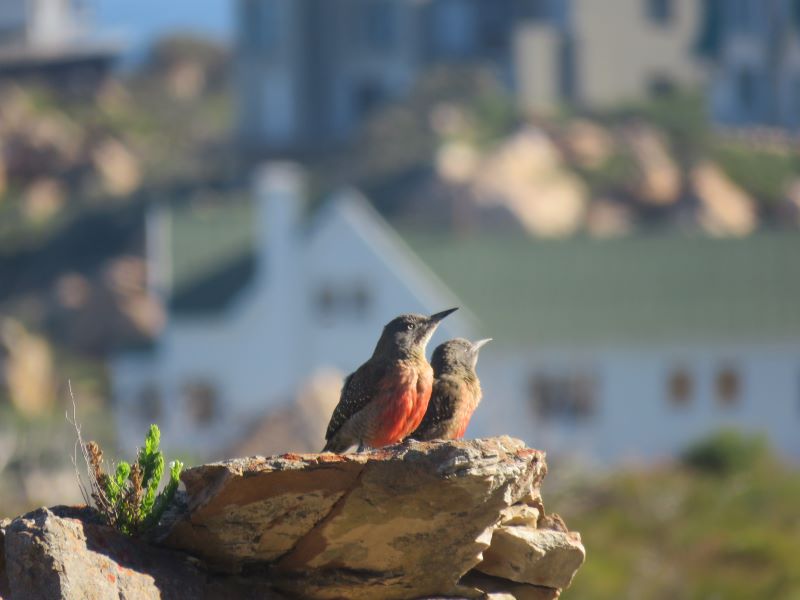
While there are some consistent patterns emerging, trying to understand them is not always straightforward.
“In Chengdu, 1 000 km east of Wuhan, birders reported seeing many more birds in the city’s parks in late January, as China went into lockdown.”
“In Chengdu, 1 000 km east of Wuhan, birders reported seeing many more birds in the city’s parks in late January, as China went into lockdown and birds came out of hiding,” said Ryan.
“While some pretty clear signals were reported that the birds in Wuhan enjoyed the lockdown, we are fortunate to have a much less transformed urban birdscape.
“That’s not to say that urban landscapes don’t have their own distinctive communities of birds, but they are nowhere near as pressured by human activity as is the case in the densely populated areas of eastern China.”
Local birds in eyeshot
From his own “very narrow perspective” from his house in Muizenberg, Ryan has been checking the local beach for any signs that shore birds have started reclaiming this intensively used area.
After four weeks of beach closure, he said there was no evidence of White-Fronted Plovers moving west of Sunrise Beach, where there is one of the few remaining populations on the north shore of False Bay.
“However, a Grey Heron and a couple of Little Egrets have taken to roosting at the mouth of Sandvlei estuary, and the Kelp Gulls are enjoying the lack of beachgoers, roosting all along the beach much more than they used to when the beach was busy.”
In terms of bird migration being affected by reduced air travel, Ryan doubts there’s much direct impact.
“Migrants are in trouble, but mainly because of global change issues across their expansive ranges. Unlike resident birds that just need to have one place protected, migrants need safe breeding, wintering areas, and migration corridors or stopover sites.
“But overseas the concern is that we are moving into the breeding season in the Northern Hemisphere. There’s a concern that animals are adapting so quickly and breeding in places they don’t usually. When lockdown is lifted, they’re going to be exposed to levels of disturbance that will affect their ability to breed successfully. Birds too will face similar challenges.”
“Perhaps we can actually band together to do something that really is going to change the way we live on this planet.”
However, in view of Earth Day and its mission, there is a silver lining to the COVID-19 crisis, he said.
“If we can have this level of global response to what is a relatively minor challenge … if we can take that and apply that to what is really a significant challenge to biodiversity on the planet – the climate crisis – then perhaps we can actually band together to do something that really is going to change the way we live on this planet.”
Research in isolation
While lockdown restricts fieldwork, some bird researchers are making use of the downtime in the best way possible: gathering data from homebound birdwatchers.
PhD candidate at UCT’s multidisciplinary Centre for Statistics in Ecology, the Environment and Conservation Jessleena Suri is doing just that. Suri studies the spatio-temporal dynamics between urban landscapes and bird community composition in South African cities. (“The catchier title is ‘How do cities structure bird communities in time and space?’ ”)
Working with her supervisor and co-supervisors, her research looks at what makes certain cities better than others at preserving their natural bird communities, and how cities can be better designed to favour more native and vulnerable species.
“Gardens are an important part of this as they supplement many resources for certain species, especially during seasonal extremes,” she noted. “Above all, engaging with urban biodiversity is the best way to conserve it, and again, gardens are important sites for this. The goal is to inform how green spaces – gardens being an often-overlooked part of this – can better act as bridges from natural areas to urban areas, as well as identifying species that can benefit most.”
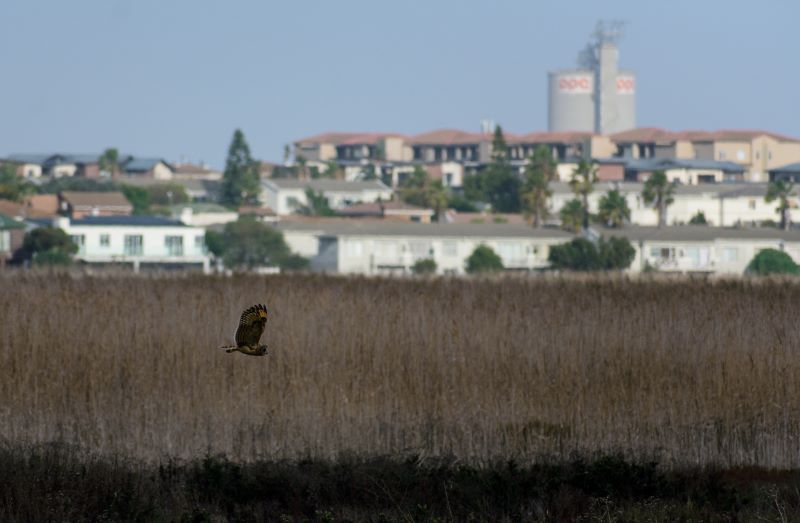
Suri was meant to spend the months of March and April conducting bird surveys throughout Cape Town. But while the lockdown interfered with her own fieldwork, it allowed her to cast the net wider and gain virtual access to people’s gardens all over the country.
Polling birders
Her lockdown garden survey went online at the start of the lockdown and is harnessing data from birders in their gardens all over South Africa, Botswana and Zimbabwe. Along with providing some basic information about their gardens, participants are asked to conduct weekly 10-minute bird counts from the same spot. Counts done between dawn and 10:00 are most valuable as this is when bird activity is highest.
However, she wasn’t prepared for the deluge of information that hit her inbox from around the country. Within a few days Suri had started receiving more data than she could have collected herself in a month.
Respondents to her online survey are reporting all kinds of interesting sightings, from sparrowhawks hunting doves to kingfishers. Those who are submitting daily counts have reported plenty of variation from day to day, or at different times of day.
“The lockdown has been like a large-scale natural experiment.”
“It’s a hugely valuable resource to urban ecology research and could be used to answer a range of questions beyond the scope of my own work and the question of how many birds are responding to the lockdown.”
She agrees that South Africans probably won’t see the extreme changes that Wuhan did. (“My family is in New Delhi and they have been reporting similar things!”)
While many are delighted to have something to keep them occupied during isolation, the lockdown has been “like a large-scale natural experiment”.
“It’s finally allowing us to gather some kind of baseline for urban ecosystems without the degree of anthropogenic disturbance they normally experience.
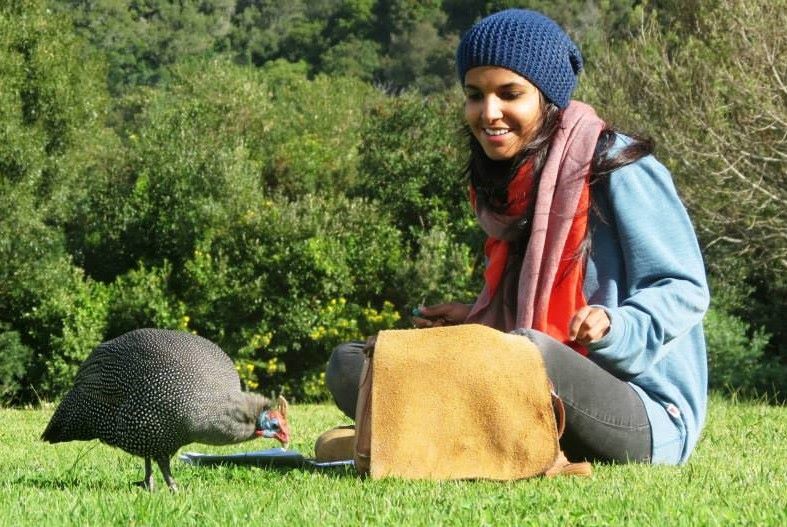
The most interesting effect on the urban ecology in the wake of lockdown is the lack of noise pollution, she said. She suspects that with the demise of traffic, birds that tend to inhabit urban green spaces might be venturing further out.
“And if people keep submitting their counts after lockdown, we can really start to answer these questions.”
“For one, there’s no doubt that we’re able to hear more birds – and from further away.”
“For one, there’s no doubt that we’re able to hear more birds – and from further away. A friend who lives in the middle of very urban Observatory recently heard Cape Spurfowls calling. Either they popped over from the River Club to wander the streets or they could just be heard from further away.”
Interestingly, urban birds are known to adjust their songs in cities.
“Louder, faster, longer and even more persistent calling so that they can hear each other over the constant noise,” said Suri.
To contribute to this work please go to urbanbirds.sa@gmail.com.
 This work is licensed under a Creative Commons Attribution-NoDerivatives 4.0 International License.
This work is licensed under a Creative Commons Attribution-NoDerivatives 4.0 International License.
Please view the republishing articles page for more information.







